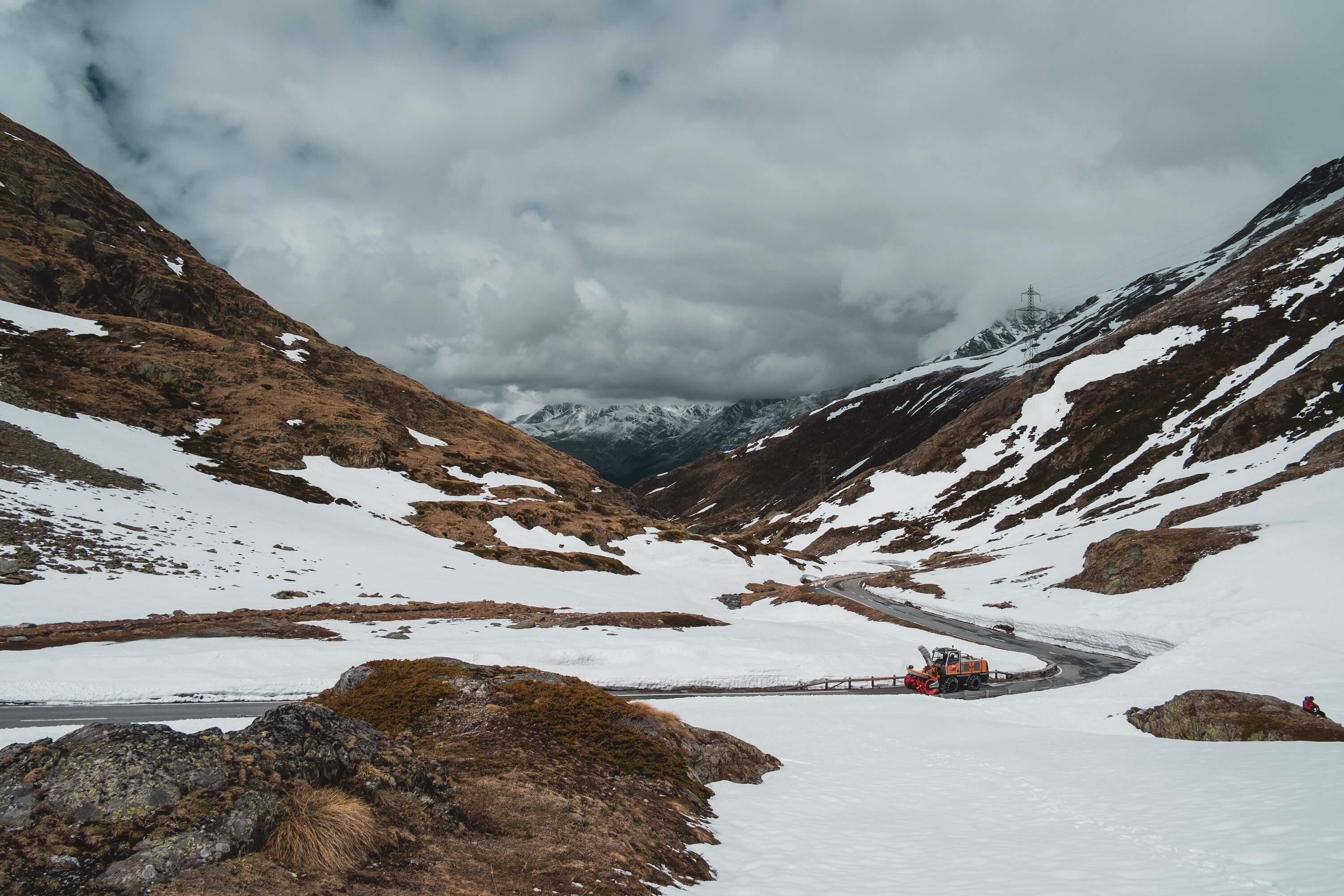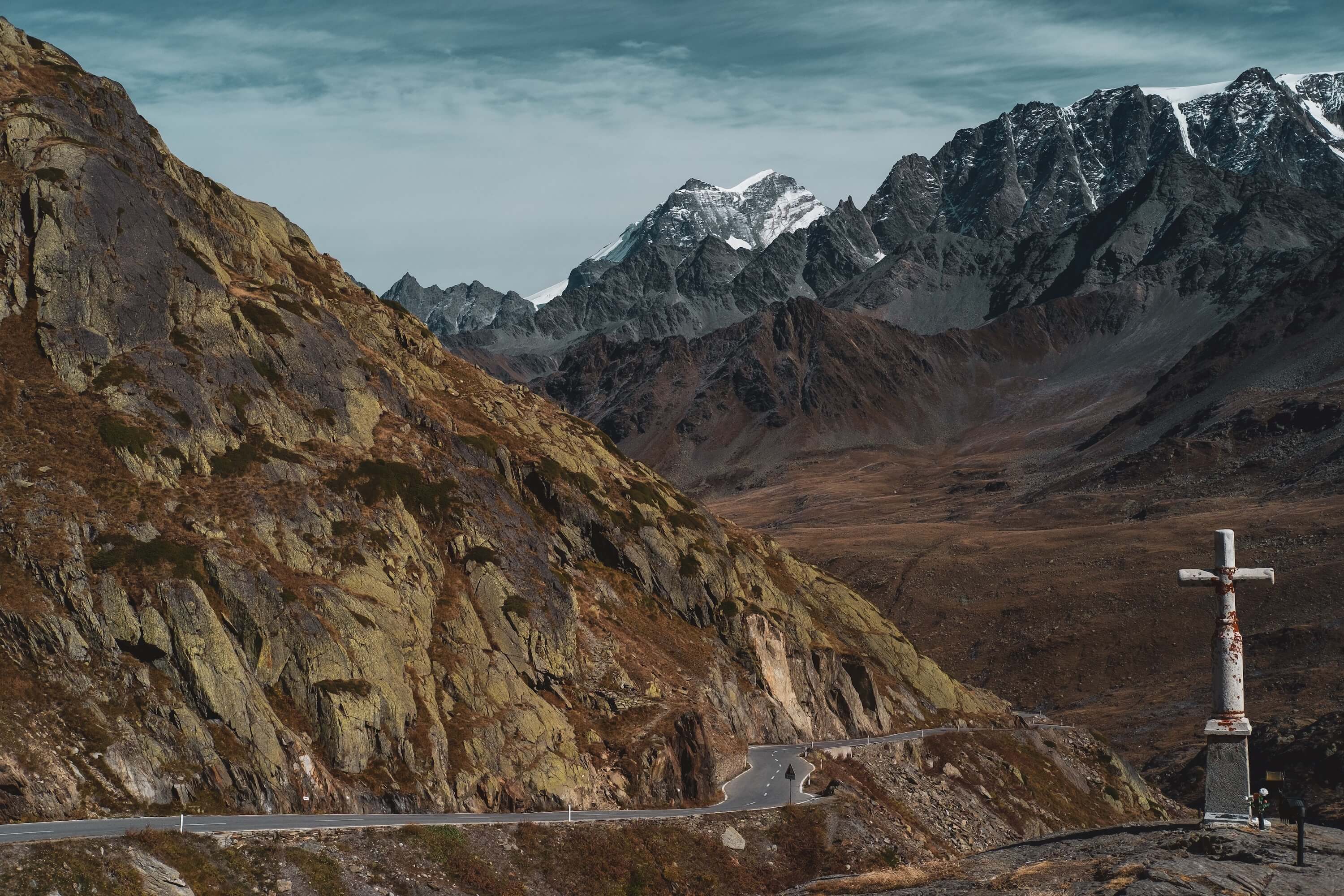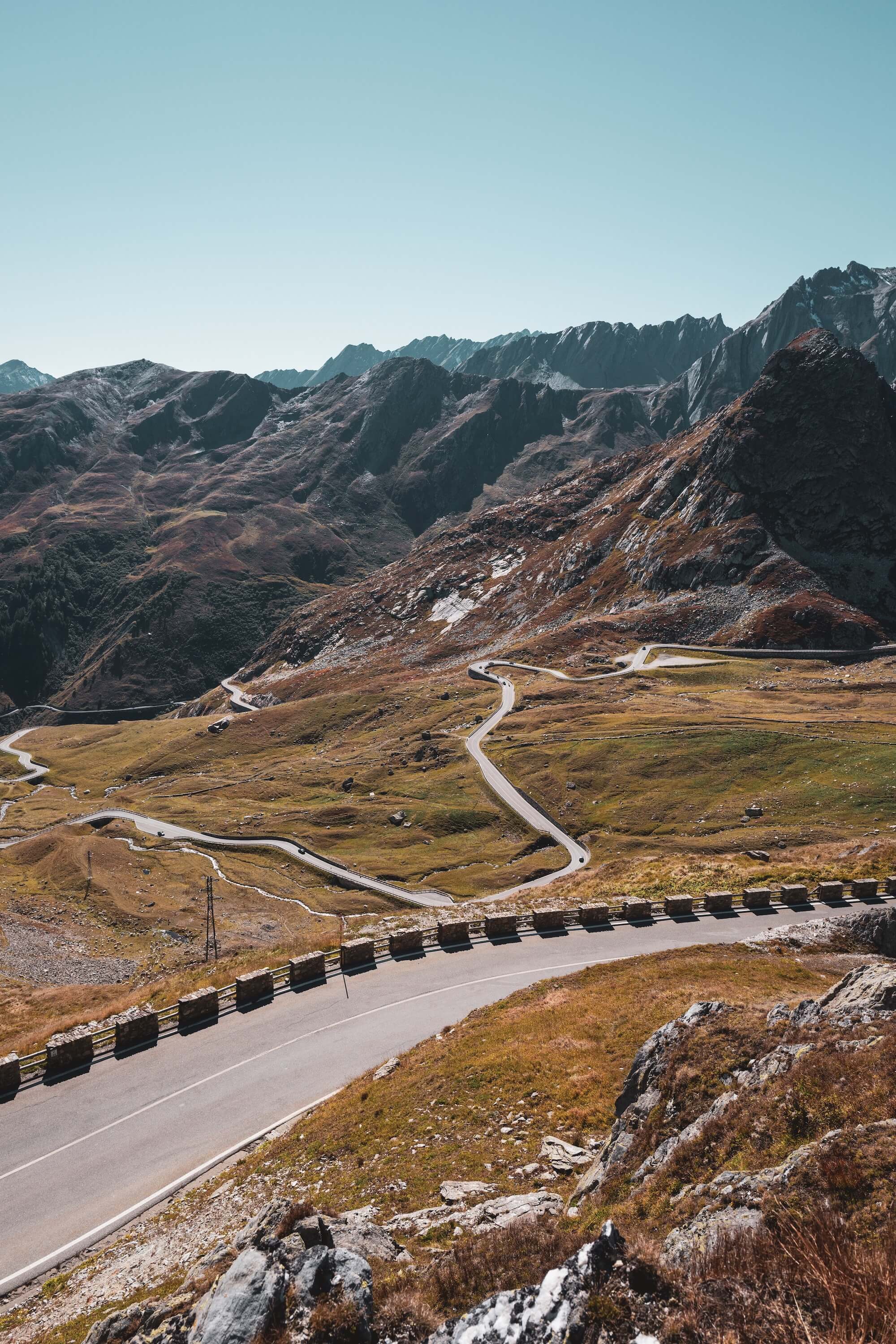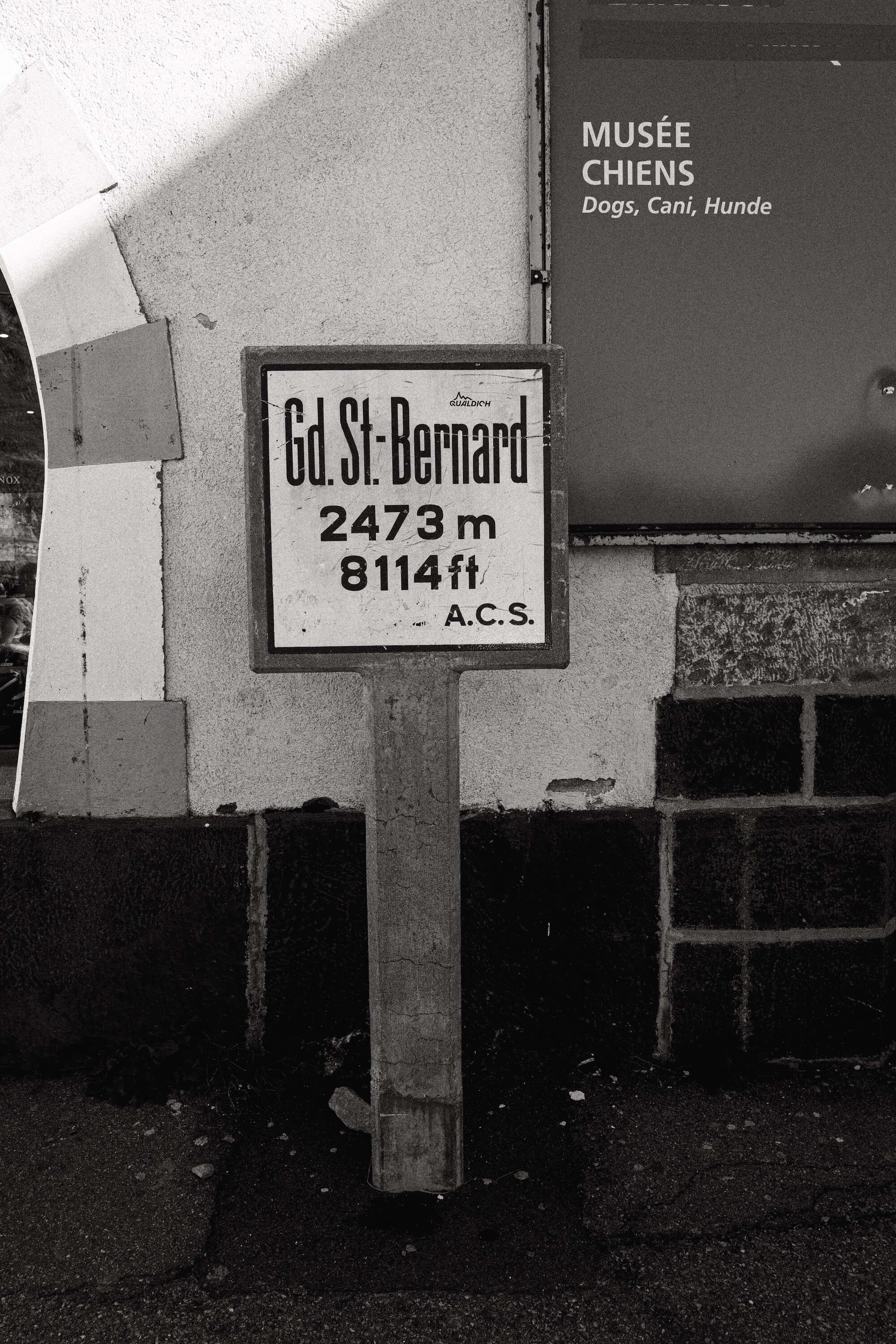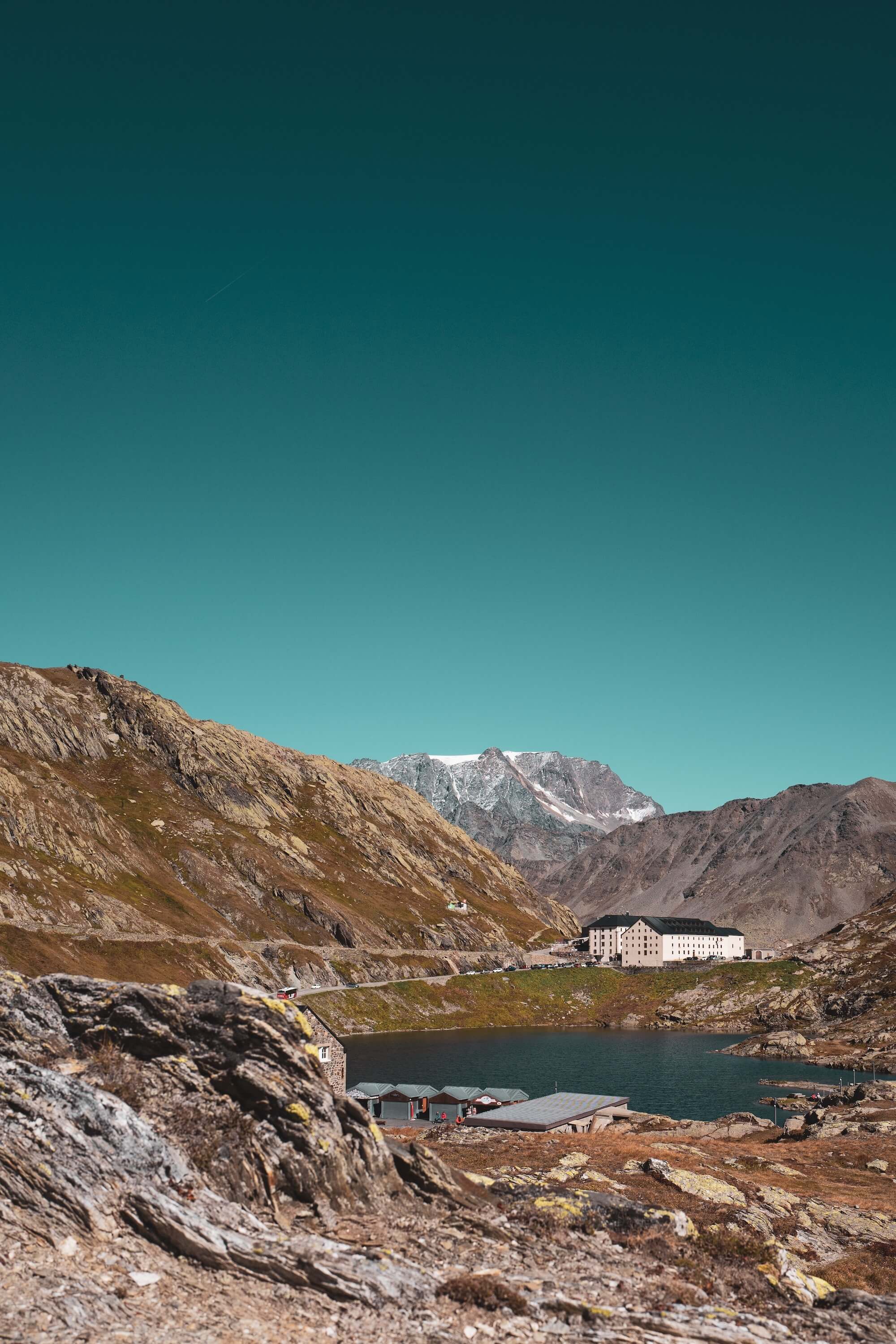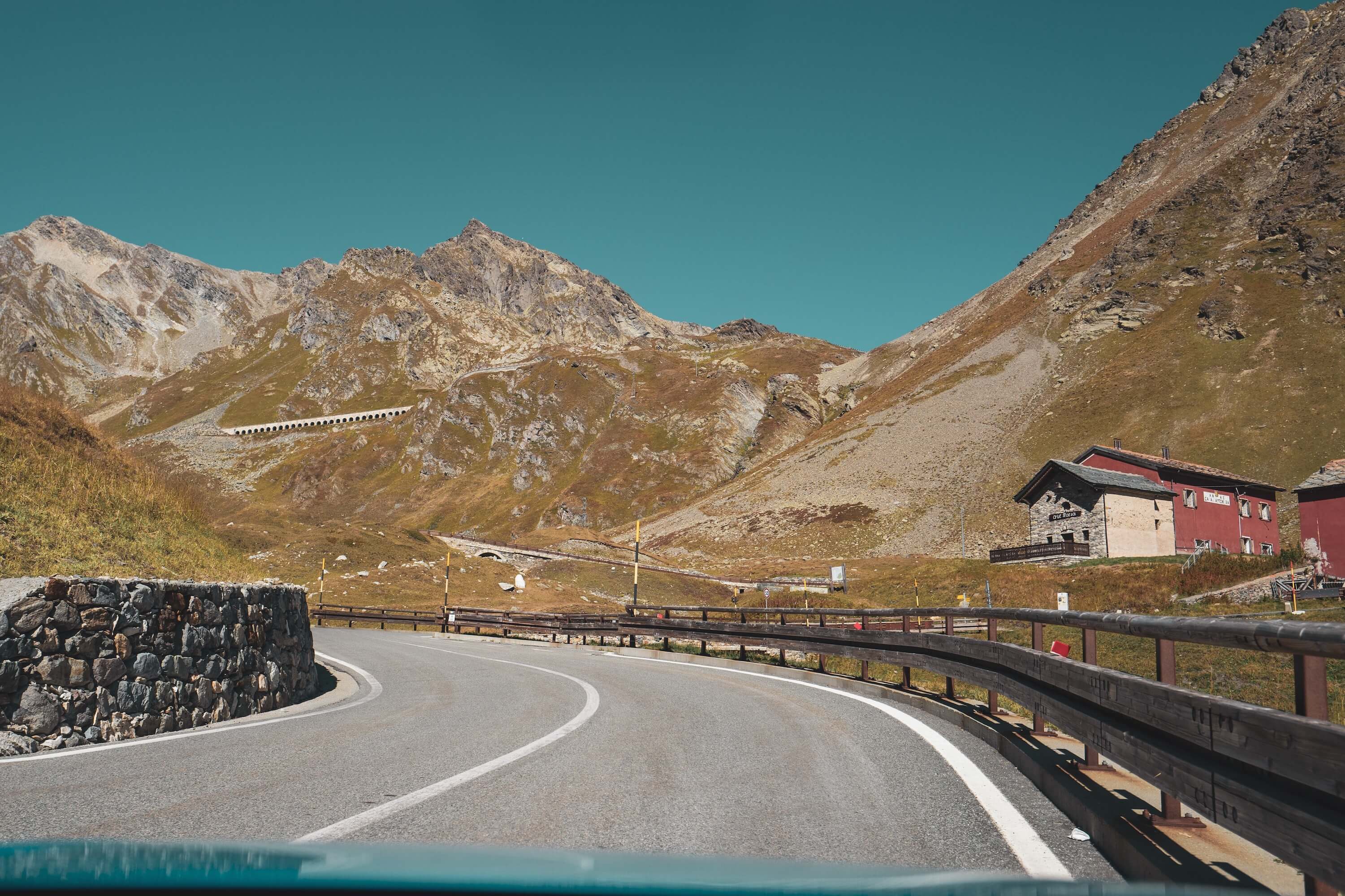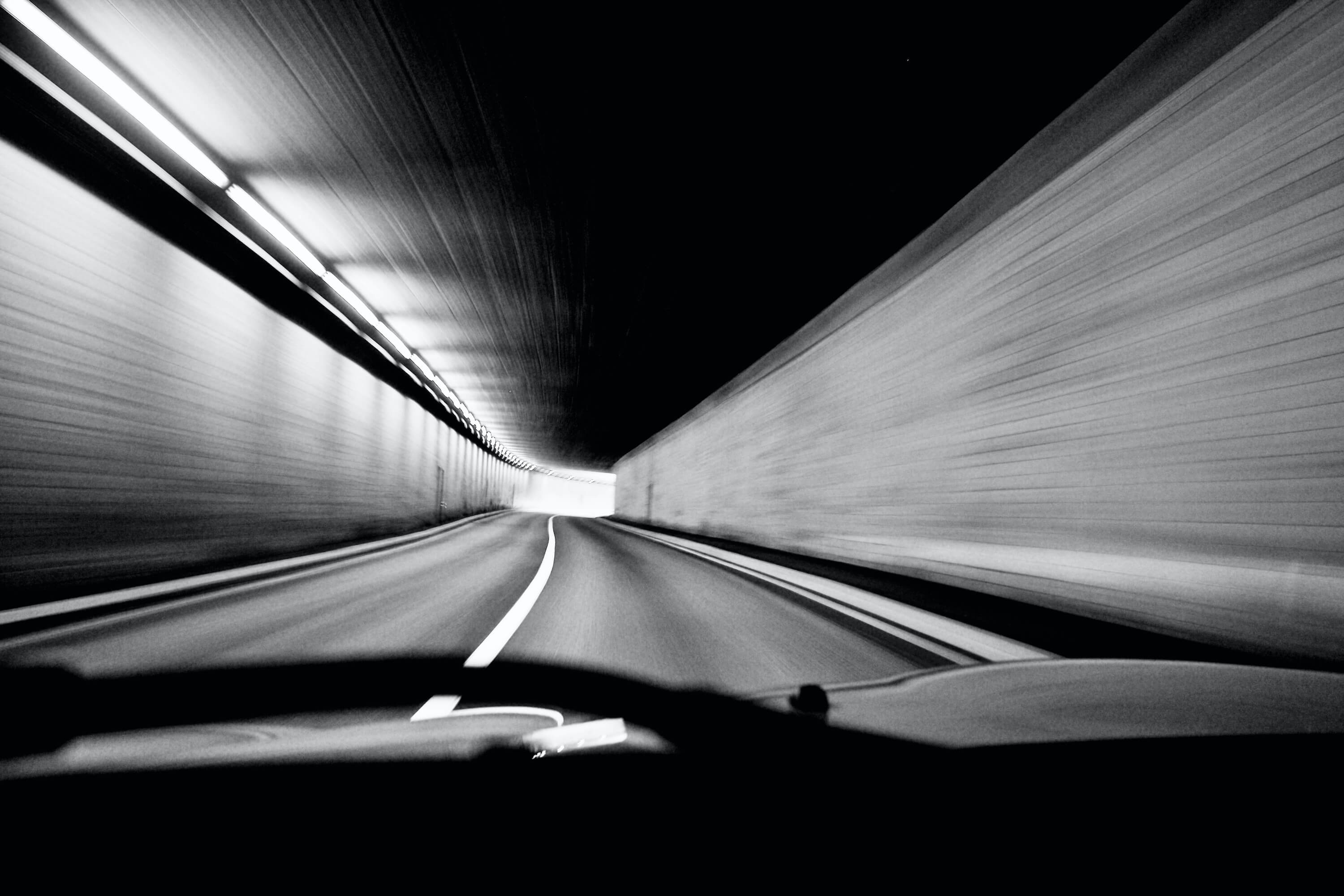For centuries, the Col du Grand St.Bernard was one of Europe’s most important and strategic transit points. When Augustus was planning the conquest of Britannia, he ordered the track to be widened, making it passable for carts, and so useful for the military and trade. It was Bernard of Menthon in the eleventh century who came to the rescue of many a traveller by founding the hostel at the summit of the pass. It became a refuge for those accosted by bandits or battered by storms, and Bernard later became a Saint and the road his namesake.
In May 1800 Napoleon’s army used the Col du Grand St.Bernard to enter Italy. He chose the shortest route but was still held up by snow and ice. The crossing was compared by writers at the time to Hannibal’s quest, leading to an iconic painting by Jacques-Louis David imaginatively titled Napoleon Crossing the Alps (1801).
At 2,469 metres, the Col du Grand St.Bernard is the third-highest road in the Alps. The pass was replaced for most traffic by a toll tunnel in 1964, but the old pass road remains and can be accessed before the tunnel. The old elevation on the pass sign reads 2473 metres and hasn’t been updated.
From Italy the tunnel takes priority for most traffic so look out for a slip road on the right before the main tunnel signs. Taking the pass road means you don’t get to cross the impressive 305- metre-long Dardanelli Viaduct. Famous for its appearance in the opening sequence of the film The Italian Job (1969), the viaduct was built to access the tunnel and opened in 1964, not long before the film’s release. In the film, Roger Beckermann and his Lamborghini Miura pass over the viaduct and up the Saint-Bernard in the most iconic of film scenes to feature a mountain pass. The drive up the pass takes place on the Saint-Bernard, but the part where Beckermann meets his doom in a tunnel was shot on the nearby SS26 road to La Thuile. The classic closing scenes of the film, featuring the bus hanging over the edge of the road, were shot on Colle del Nivolet in Italy.
The starting point for the ascent is the village of Saint Rhemy, the last inhabited place on this side of the pass. In bygone times the men of the village, the Marronniers, held the right to accompany travellers and provide safe passage over the pass. From here up the environment takes on a marked change; the road signs and buildings disappear and we are surrounded by trees and mountains. We get occasional glimpses of the tunnel road before it heads into the mountain before crossing the tree line, where the landscape becomes dramatic. The open pastures are strewn with rocky structures such as the striking Tour des Fous, which, legend holds, was infested by the Saracens before the hostel was built at the summit of the pass. These towers of rock are all overlooked by the towering Aiguille des Sasses. A short tunnel and a tight left bend resolves at the summit.
The Italian border outpost is nothing but an abandoned booth, but a modern Swiss one sits a short distance away next to a glacial lake that is frozen 265 days of the year. The lake is surrounded by buildings and a few remnants of summer stalls. A statue of Saint-Bernard looks back down the Italian side.The hostel and monastery are on the far side of the lake. The monastery houses a permanent community of monks and serves as a spiritual centre and retreat for visitors. A museum of the Saint-Bernard dog, that was bred here is behind the buildings. The old tale of casks of brandy around their necks is a myth, but they did rescue many lost travellers, and one in particular, Barry I, became so famous that they had him stuffed and put in a museum. (The dog, not the traveller.) As we leave the summit, views of the Swiss mountains fill the windscreen as the Italian SS27 turns into the Swiss route 21 and is immediately different from the Italian side. It’s vintage Swiss pass material with the road surrounded by rock-strewn pastures and mountains. Trails snake around the pass road leading two feet, two wheels or four hooves up and down the Swiss side. A series of ventilation towers for the tunnel are dotted around. The road tightens and the corners follow suit as we head down the short straights and endless, folding hairpin bends.
The old pass road ends as the tunnel begins. The road to Martigny starts in an avalanche galleries, part tunnels designed to keep the snow off the road making it usable 365 days a year. Under the galleries glimpses of the large Lac des Toules reservoir come and go. The road descends on fast, sweeping bends, through small hamlets such as Bourg-Saint-Pierre and Liddes, dipping below the tree line before ending at Sembrancher, where a left turn takes you to Martigny.
Bernard of Menthon
Bernard of Menthon was a priest in charge of caring for the travellers and founded the Saint-Bernard Hostel. He gave his name to the Saint-Bernard breed of dog, originally bred for the cold environment of the hostel. Later, he established another hostel on the Col du Petit St.Bernard. Bernard was not formally recognized as a Saint until his canonization by Pope Innocent XI in 1681 and later confirmed as the patron Saint of the Alps in 1923.
